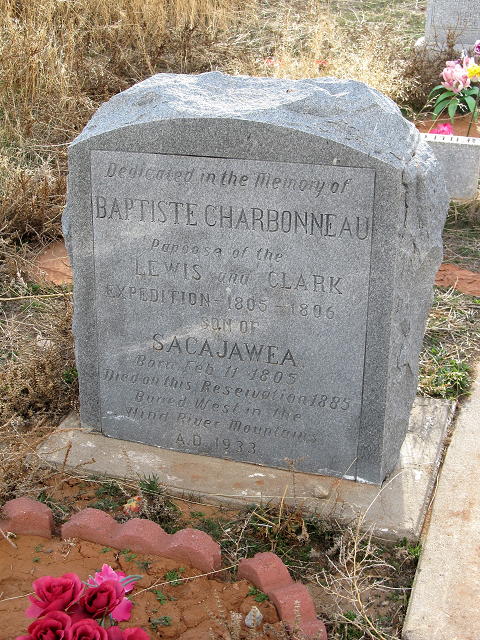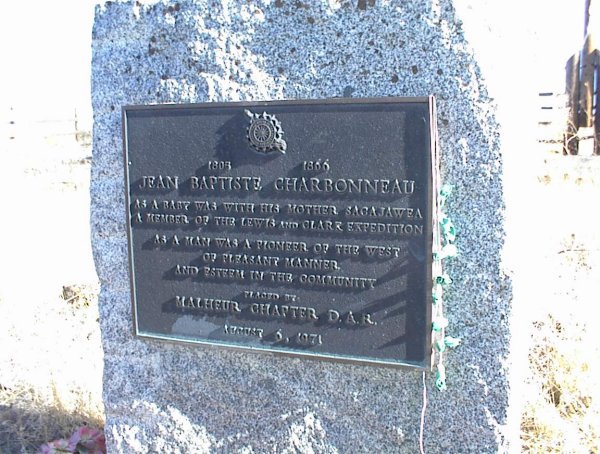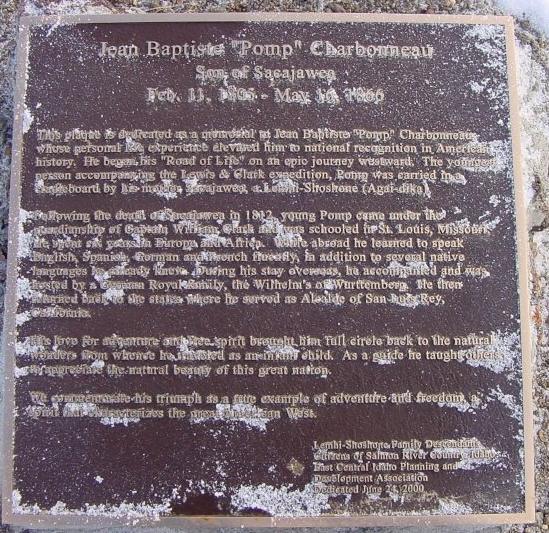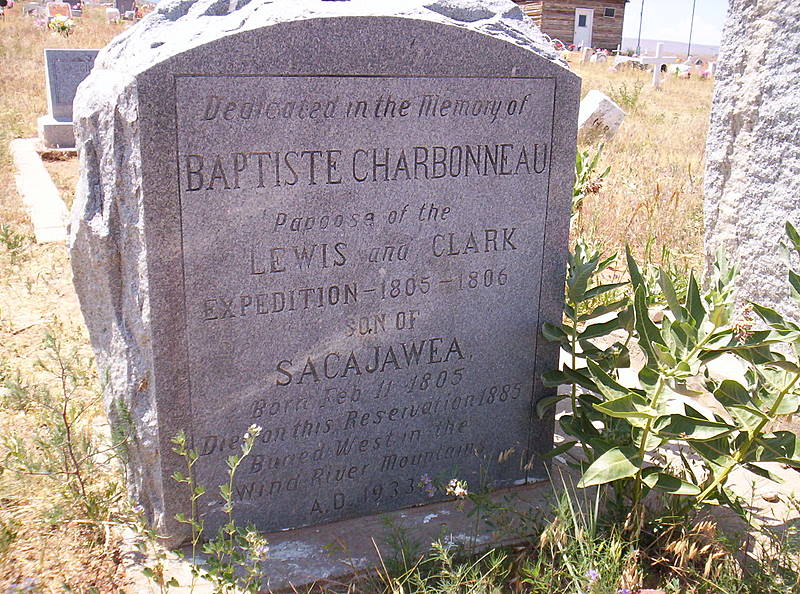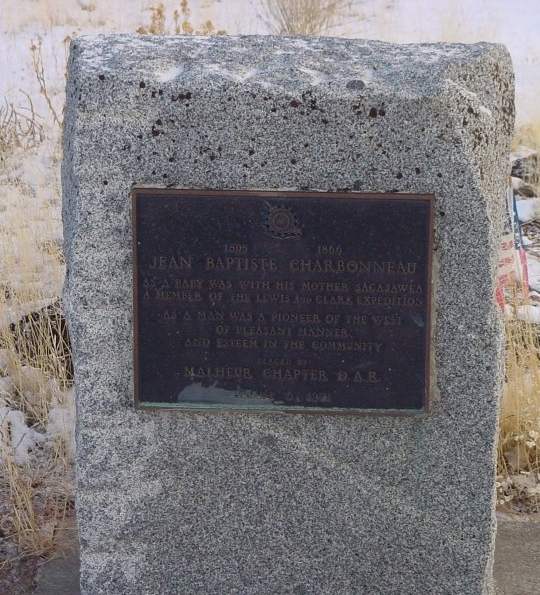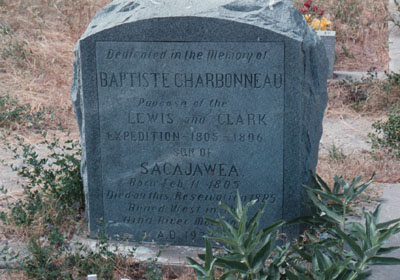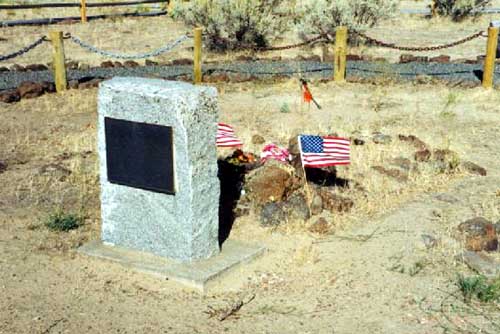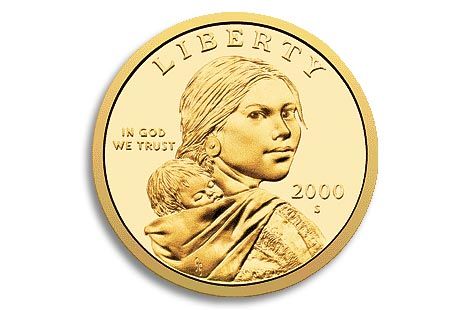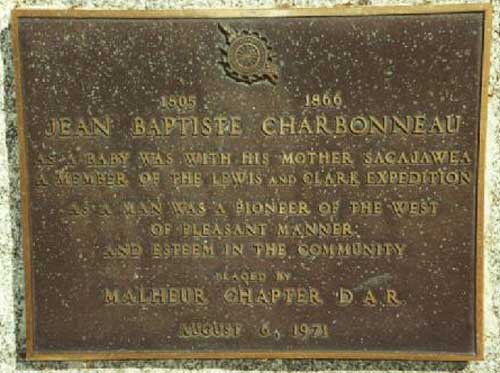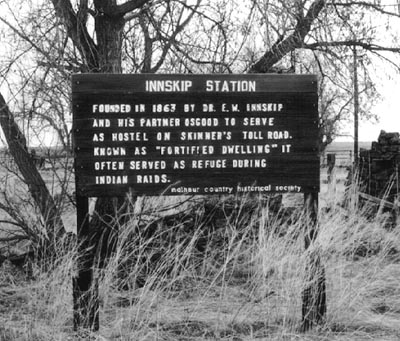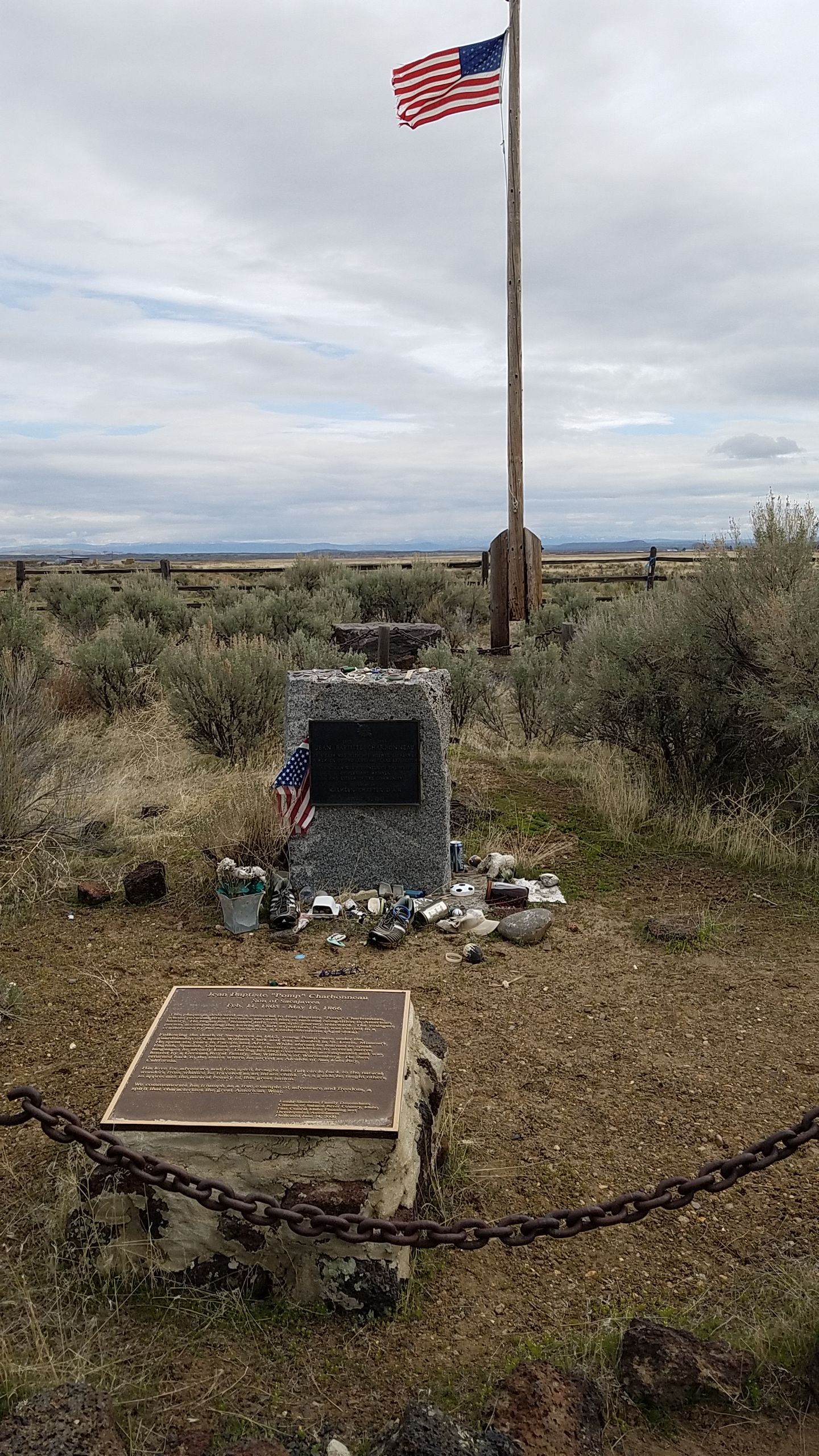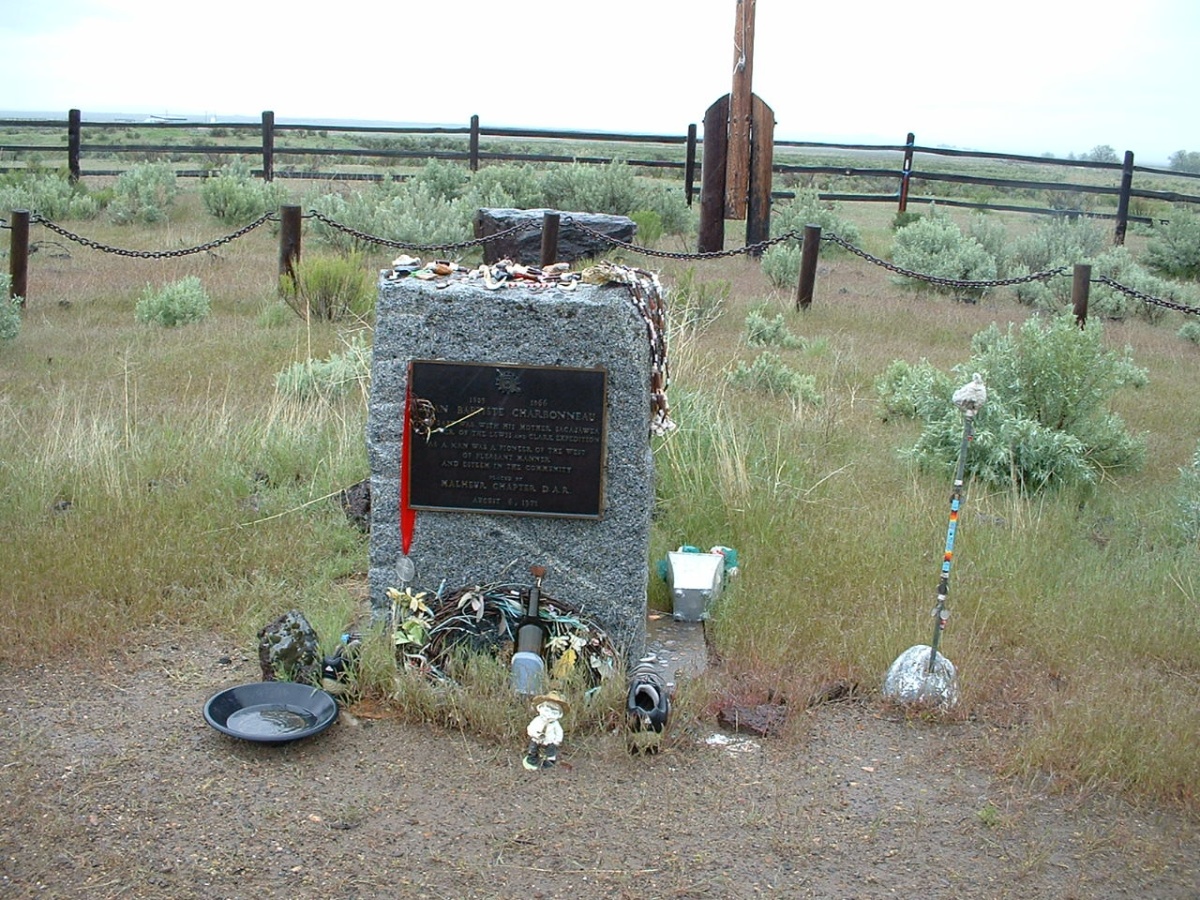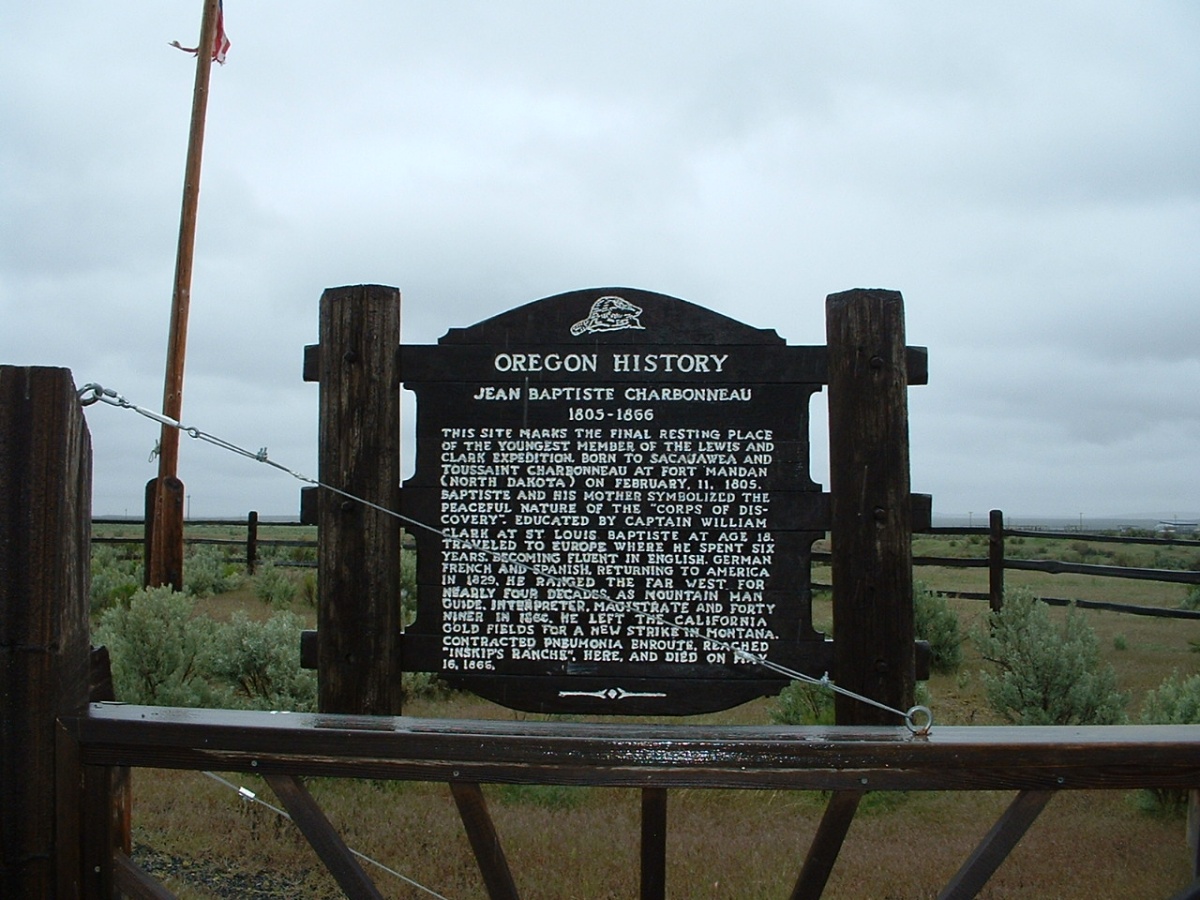Jean Baptiste Charbonneau was born at the Fort Mandan winter camp built by the members of the Lewis and Clark Expedition, located in modern-day North Dakota. The location was named by the Expedition to honor the local Native American Tribe.
Jean Baptiste's father, Toussaint Charbonneau, was a French-Canadian trapper. His mother, Sacagawea, was a Shoshone living among the Hidatsa tribe. The explorers hired the couple as guides and interpreters for their journey from the Northern Plains to the Pacific. Sacagawea and her infant played a significant role in the expedition as they was seen as an emblem of peace. Native Americans along the way perceived the party to be peaceful because no war party would include a woman with her infant napping sweetly on her back.
Clark was enchanted by the child, nicknamed him "Pomp, " and even named two geographical features after him, one being Pompey's Pillar in south central Montana.
Around April 1807, a year after the Expedition's return to Fort Mandan, the Charbonneau family moved to St. Louis at William Clark's insistence. In the years following, his parents made trips between the city and North Dakota, leaving Jean Baptiste in the care of Clark in order to receive an education.
In 1813, after the death of Sacagawea, Jean Baptiste and his infant sister, Lizette, where both legally adopted by Clark. It is not fully known if Toussaint Charbonneau signed over custody after his wife's death or if Clark falsely claimed, whether knowingly or otherwise, that the children were orphaned and their father was also deceased in order to gain custody. Nevertheless, Clark provided Jean Baptiste an excellent education at St. Louis Academy.
While he was 18, Jean Baptiste was working at the Kaw Trading Post on the Kansas River when he met Duke Friedrich Paul Wilhelm of Württemberg, nephew of King Friedrich I, Friedrich Wilhelm Karl. Wilhelm was traveling to the Northern Plains with Toussaint Charbonneau, Jean Baptiste's father, as his guide. The duke invited Jean Baptiste to accompany him back to Europe and for the next six years, Jean Baptiste lived at the duke's palace. He learned German and Spanish and improved both his English and French. The pair traveled across Europe and northern Africa.
Jean Baptiste returned to St. Louis in 1829, where he was hired by the American Fur Company, followed by the Rocky Mountain Fur Company, to work as a trapper in what is now Idaho and Utah. During this time, he met and worked with many mountain men, explorers, and hunters, eventually becoming a well-regarded guide across the Rocky Mountains.
In 1846, Jean Baptiste was hired as a military scout as he was fluent in Native languages. He became the guide for the Mormon Battalion on its 1,100 mile trek from Santa Fe to San Diego during the Mexican-American War to establish a wagon road between the two cities. Know as Cooke's Road and the Gila Trail, the road is now know as the Mormon Battalion Trail. The trail became important for settlers, stagecoaches, and cattlemen, and parts of the route would go on to become the Southern Pacific Railroad and US Hwy Route 66.
After the Mexican-American War, Jean Baptiste was appointed alcalde, or mayor, at Mission San Luis Rey de Francia. His tenure was fraught with struggle between the ranchers, the local Luiseño people, and the goverment. Disturbed by the treatment of the local Native Americans, he resigned his post in August 1848.
Jean Baptist was soon caught up in gold rush fever and settled on the American River, near what is now Auburn, California, becoming a gold prospector. He was successful and, during this time, also managed the Orleans Hotel, catering to the transient prospectors who moved through the area. After sixteen years, the local economy was in a recession and Jean Baptiste set out back to the mountains. His ultimate destination was unknown, but his route took him north. In southeastern Oregon, Jean Baptiste suffered a fall while trying to cross the Owyhee River and became ill shortly after. He was taken to Inskip Station where, after no improvement to his health, died at age 61. It was reported by a fellow traveler that he died of pneumonia, but his death was also attributed to the infamous "Mountain Fever."
His graveside, located in ghost town, is listed on the National Register of Historic Places and has three historical markers. Memorials for both Jean Baptiste and Sacagawea were erected in 1933 at Fort Washakie, Wind River Reservation, Wyoming. Another memorial plaque was placed in Jean Baptiste's honor near the Old Fire House in Auburn, California. In 2000 Sacagawea was honored with her portrait on the gold $1 coin, depicted carrying her son, Jean Baptiste Charbonneau.
Jean Baptiste Charbonneau was born at the Fort Mandan winter camp built by the members of the Lewis and Clark Expedition, located in modern-day North Dakota. The location was named by the Expedition to honor the local Native American Tribe.
Jean Baptiste's father, Toussaint Charbonneau, was a French-Canadian trapper. His mother, Sacagawea, was a Shoshone living among the Hidatsa tribe. The explorers hired the couple as guides and interpreters for their journey from the Northern Plains to the Pacific. Sacagawea and her infant played a significant role in the expedition as they was seen as an emblem of peace. Native Americans along the way perceived the party to be peaceful because no war party would include a woman with her infant napping sweetly on her back.
Clark was enchanted by the child, nicknamed him "Pomp, " and even named two geographical features after him, one being Pompey's Pillar in south central Montana.
Around April 1807, a year after the Expedition's return to Fort Mandan, the Charbonneau family moved to St. Louis at William Clark's insistence. In the years following, his parents made trips between the city and North Dakota, leaving Jean Baptiste in the care of Clark in order to receive an education.
In 1813, after the death of Sacagawea, Jean Baptiste and his infant sister, Lizette, where both legally adopted by Clark. It is not fully known if Toussaint Charbonneau signed over custody after his wife's death or if Clark falsely claimed, whether knowingly or otherwise, that the children were orphaned and their father was also deceased in order to gain custody. Nevertheless, Clark provided Jean Baptiste an excellent education at St. Louis Academy.
While he was 18, Jean Baptiste was working at the Kaw Trading Post on the Kansas River when he met Duke Friedrich Paul Wilhelm of Württemberg, nephew of King Friedrich I, Friedrich Wilhelm Karl. Wilhelm was traveling to the Northern Plains with Toussaint Charbonneau, Jean Baptiste's father, as his guide. The duke invited Jean Baptiste to accompany him back to Europe and for the next six years, Jean Baptiste lived at the duke's palace. He learned German and Spanish and improved both his English and French. The pair traveled across Europe and northern Africa.
Jean Baptiste returned to St. Louis in 1829, where he was hired by the American Fur Company, followed by the Rocky Mountain Fur Company, to work as a trapper in what is now Idaho and Utah. During this time, he met and worked with many mountain men, explorers, and hunters, eventually becoming a well-regarded guide across the Rocky Mountains.
In 1846, Jean Baptiste was hired as a military scout as he was fluent in Native languages. He became the guide for the Mormon Battalion on its 1,100 mile trek from Santa Fe to San Diego during the Mexican-American War to establish a wagon road between the two cities. Know as Cooke's Road and the Gila Trail, the road is now know as the Mormon Battalion Trail. The trail became important for settlers, stagecoaches, and cattlemen, and parts of the route would go on to become the Southern Pacific Railroad and US Hwy Route 66.
After the Mexican-American War, Jean Baptiste was appointed alcalde, or mayor, at Mission San Luis Rey de Francia. His tenure was fraught with struggle between the ranchers, the local Luiseño people, and the goverment. Disturbed by the treatment of the local Native Americans, he resigned his post in August 1848.
Jean Baptist was soon caught up in gold rush fever and settled on the American River, near what is now Auburn, California, becoming a gold prospector. He was successful and, during this time, also managed the Orleans Hotel, catering to the transient prospectors who moved through the area. After sixteen years, the local economy was in a recession and Jean Baptiste set out back to the mountains. His ultimate destination was unknown, but his route took him north. In southeastern Oregon, Jean Baptiste suffered a fall while trying to cross the Owyhee River and became ill shortly after. He was taken to Inskip Station where, after no improvement to his health, died at age 61. It was reported by a fellow traveler that he died of pneumonia, but his death was also attributed to the infamous "Mountain Fever."
His graveside, located in ghost town, is listed on the National Register of Historic Places and has three historical markers. Memorials for both Jean Baptiste and Sacagawea were erected in 1933 at Fort Washakie, Wind River Reservation, Wyoming. Another memorial plaque was placed in Jean Baptiste's honor near the Old Fire House in Auburn, California. In 2000 Sacagawea was honored with her portrait on the gold $1 coin, depicted carrying her son, Jean Baptiste Charbonneau.
Family Members
Advertisement
Advertisement











